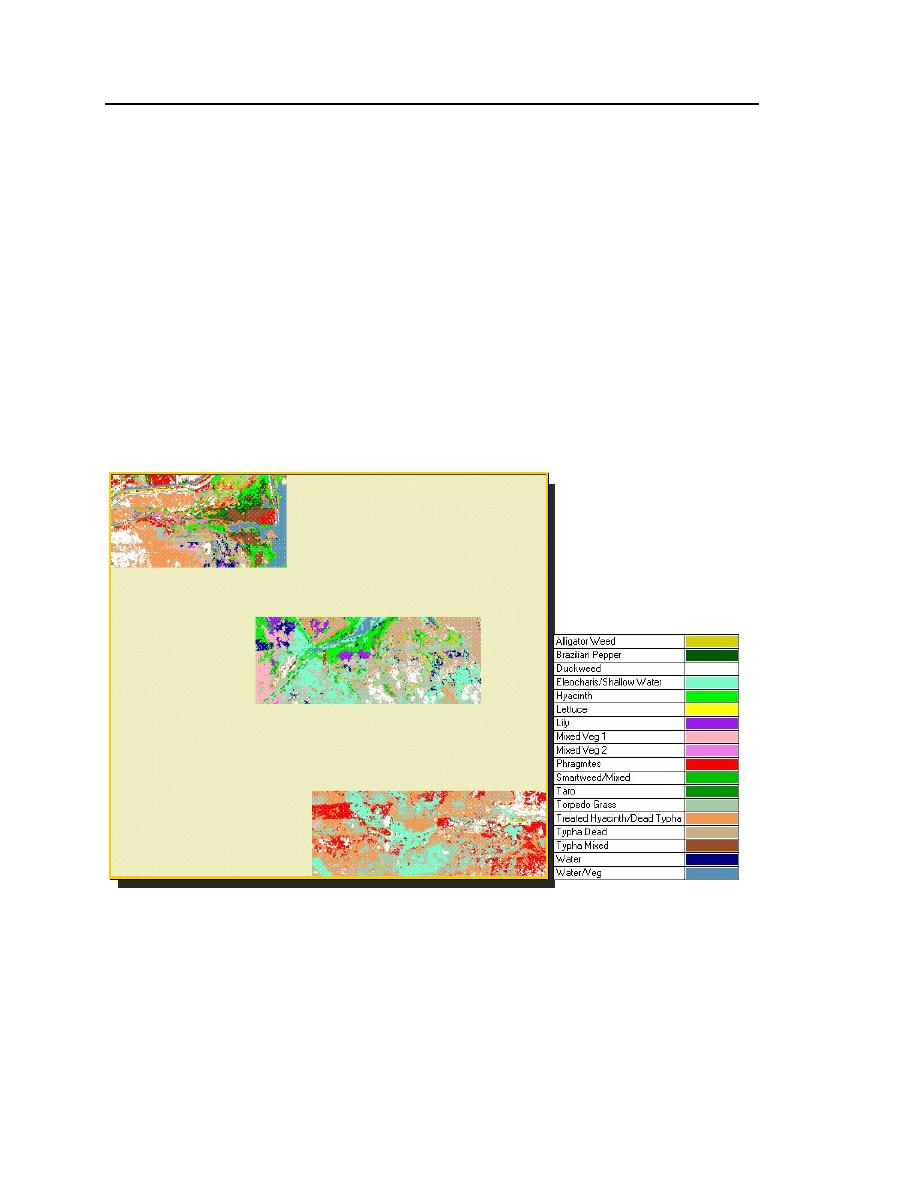
62
ERDC TR-05-1
where all raster polygons below the MMU threshold size are "dropped." The fi-
nal step in the technique is to iteratively apply a majority filter to the sieved im-
age. This majority filter, usually a 33 pixel matrix, uses a neighborhood opera-
tion to fill in the now empty pixels that were lost in the sieving step. As the
center pixel of the 33 matrix passes over each dropped pixel, the class values for
the eight surrounding pixels in the matrix are tallied. The blank center pixel is
then assigned the same class value as the majority of the pixels within the matrix.
The filter then moves to the next sieved pixel and repeats the operation. The filter
is passed over the image many times until all pixels that were deleted in the
sieving operation are reassigned a new class value. The operation ignores any
background pixels that were already present in the full resolution thematic map.
Figure 34 shows the aggregated vegetation class map after application of the
MMU filter.
Figure 36. Supervised classification results of CAMIS mosaics after application of the
144 pixel minimum mapping unit filter.



 Previous Page
Previous Page
